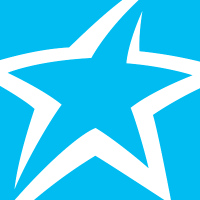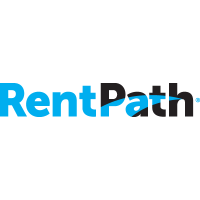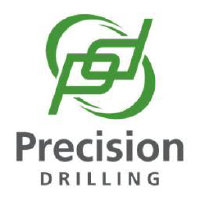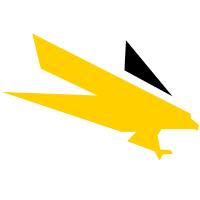
Agnico Eagle Mines Ltd
TSX:AEM
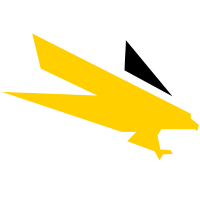

| US |

|
Johnson & Johnson
NYSE:JNJ
|
Pharmaceuticals
|
| US |

|
Berkshire Hathaway Inc
NYSE:BRK.A
|
Financial Services
|
| US |

|
Bank of America Corp
NYSE:BAC
|
Banking
|
| US |

|
Mastercard Inc
NYSE:MA
|
Technology
|
| US |

|
UnitedHealth Group Inc
NYSE:UNH
|
Health Care
|
| US |

|
Exxon Mobil Corp
NYSE:XOM
|
Energy
|
| US |

|
Pfizer Inc
NYSE:PFE
|
Pharmaceuticals
|
| US |

|
Palantir Technologies Inc
NYSE:PLTR
|
Technology
|
| US |

|
Nike Inc
NYSE:NKE
|
Textiles, Apparel & Luxury Goods
|
| US |

|
Visa Inc
NYSE:V
|
Technology
|
| CN |

|
Alibaba Group Holding Ltd
NYSE:BABA
|
Retail
|
| US |

|
JPMorgan Chase & Co
NYSE:JPM
|
Banking
|
| US |

|
Coca-Cola Co
NYSE:KO
|
Beverages
|
| US |

|
Walmart Inc
NYSE:WMT
|
Retail
|
| US |

|
Verizon Communications Inc
NYSE:VZ
|
Telecommunication
|
| US |

|
Chevron Corp
NYSE:CVX
|
Energy
|
Utilize notes to systematically review your investment decisions. By reflecting on past outcomes, you can discern effective strategies and identify those that underperformed. This continuous feedback loop enables you to adapt and refine your approach, optimizing for future success.
Each note serves as a learning point, offering insights into your decision-making processes. Over time, you'll accumulate a personalized database of knowledge, enhancing your ability to make informed decisions quickly and effectively.
With a comprehensive record of your investment history at your fingertips, you can compare current opportunities against past experiences. This not only bolsters your confidence but also ensures that each decision is grounded in a well-documented rationale.
Do you really want to delete this note?
This action cannot be undone.

| 52 Week Range |
111.34
260.7
|
| Price Target |
|
We'll email you a reminder when the closing price reaches CAD.
Choose the stock you wish to monitor with a price alert.

|
Johnson & Johnson
NYSE:JNJ
|
US |

|
Berkshire Hathaway Inc
NYSE:BRK.A
|
US |

|
Bank of America Corp
NYSE:BAC
|
US |

|
Mastercard Inc
NYSE:MA
|
US |

|
UnitedHealth Group Inc
NYSE:UNH
|
US |

|
Exxon Mobil Corp
NYSE:XOM
|
US |

|
Pfizer Inc
NYSE:PFE
|
US |

|
Palantir Technologies Inc
NYSE:PLTR
|
US |

|
Nike Inc
NYSE:NKE
|
US |

|
Visa Inc
NYSE:V
|
US |

|
Alibaba Group Holding Ltd
NYSE:BABA
|
CN |

|
JPMorgan Chase & Co
NYSE:JPM
|
US |

|
Coca-Cola Co
NYSE:KO
|
US |

|
Walmart Inc
NYSE:WMT
|
US |

|
Verizon Communications Inc
NYSE:VZ
|
US |

|
Chevron Corp
NYSE:CVX
|
US |
This alert will be permanently deleted.
Agnico Eagle Mines Ltd
Agnico Eagle Mines Ltd. began its journey as a small prospecting firm, but over the decades, it has meticulously carved its place as a prominent player in the gold mining industry. The company operates with a strategic focus on high-quality gold properties, primarily in Canada, Finland, and Mexico, which are largely situated in politically stable regions, a crucial consideration in the mining sector. This geo-focused strategy allows Agnico Eagle to maintain a strong operational control while efficiently managing costs and harnessing the benefits of economies of scale inherent in its investment-rich mines. The company's robust portfolio and its unyielding attention to sustainable practices manifest in their operational strategies, where technological innovations are seamlessly integrated into the extraction and processing practices to augment output and efficiency.
Profits at Agnico Eagle primarily stem from the sale of gold bullion extracted from its mines. The company also generates revenue from other by-products of the mining process, such as silver, zinc, and copper, although gold remains the cornerstone of its earnings. Agnico Eagle's success can be attributed to its long-held philosophy of "quality over quantity." This approach is reflected in its disciplined exploration, careful development of new mines, and strategic acquisitions that emphasize ore quality. By maintaining tight control over production costs and forging strong partnerships within local communities, the company has managed not only to safeguard its assets but also to build long-term value and shareholder trust, ensuring a resilient presence in the dynamic landscape of the global mining industry.

Agnico Eagle Mines Ltd. began its journey as a small prospecting firm, but over the decades, it has meticulously carved its place as a prominent player in the gold mining industry. The company operates with a strategic focus on high-quality gold properties, primarily in Canada, Finland, and Mexico, which are largely situated in politically stable regions, a crucial consideration in the mining sector. This geo-focused strategy allows Agnico Eagle to maintain a strong operational control while efficiently managing costs and harnessing the benefits of economies of scale inherent in its investment-rich mines. The company's robust portfolio and its unyielding attention to sustainable practices manifest in their operational strategies, where technological innovations are seamlessly integrated into the extraction and processing practices to augment output and efficiency.
Profits at Agnico Eagle primarily stem from the sale of gold bullion extracted from its mines. The company also generates revenue from other by-products of the mining process, such as silver, zinc, and copper, although gold remains the cornerstone of its earnings. Agnico Eagle's success can be attributed to its long-held philosophy of "quality over quantity." This approach is reflected in its disciplined exploration, careful development of new mines, and strategic acquisitions that emphasize ore quality. By maintaining tight control over production costs and forging strong partnerships within local communities, the company has managed not only to safeguard its assets but also to build long-term value and shareholder trust, ensuring a resilient presence in the dynamic landscape of the global mining industry.
Record Results: Agnico Eagle reported record financial results this quarter, including record revenue, EBITDA, and adjusted net income, driven by strong gold prices and solid operational performance.
Production: Gold production reached 867,000 ounces in Q3, putting the company at 77% of its full-year guidance range and on track to meet the midpoint of its 3.4 million ounce target.
Cost Control: Cash costs rose to $994 per ounce mainly due to higher royalty expenses from gold prices, but remain within guidance, with all-in sustaining costs expected near the top end of the $1,300 per ounce range.
Balance Sheet: Net cash position more than doubled to $2.2 billion after repaying $400 million of debt and returning $350 million to shareholders; Moody's upgraded Agnico's credit rating to A3.
Shareholder Returns: The company returned $350 million to shareholders this quarter via dividends and buybacks, totaling $900 million year-to-date.
Growth Pipeline: Significant progress was made on 5 key development projects, and exploration spending and drilling activity reached new highs, leading to strong resource growth outlook.
Productivity Focus: Despite strong prices and results, management emphasized ongoing productivity improvements, technology integration, and disciplined cost management across all sites.
Guidance: Cost and production guidance for the full year remain unchanged, but cost pressures from inflation and royalties are expected to persist into 2026.
Management
Ammar Al-Joundi is a prominent executive in the mining sector, known for his significant contributions to Agnico Eagle Mines Limited, a major Canadian gold producer with mining operations in Canada, Finland, and Mexico. Al-Joundi holds a Master of Business Administration (MBA) and has extensive experience in the financial and mining industries. Before assuming the role of President at Agnico Eagle, Al-Joundi developed a sophisticated understanding of finance and operations in the mining sector through various senior roles. His career includes key positions at Barrick Gold Corporation, where he served as Chief Financial Officer. His expertise lies in strategic financial management, capital allocation, and corporate development. At Agnico Eagle, he is recognized for his leadership in advancing the company’s growth strategy while emphasizing sustainability and operational excellence. His tenure has seen significant expansions and developments, contributing to Agnico Eagle's reputation as one of the leading companies in the gold mining industry. Overall, Ammar Al-Joundi’s career reflects a blend of financial acumen and industry-specific knowledge, positioning him as a respected leader in the resource sector.
Before assuming the role of President at Agnico Eagle, Al-Joundi developed a sophisticated understanding of finance and operations in the mining sector through various senior roles. His career includes key positions at Barrick Gold Corporation, where he served as Chief Financial Officer. His expertise lies in strategic financial management, capital allocation, and corporate development.
At Agnico Eagle, he is recognized for his leadership in advancing the company’s growth strategy while emphasizing sustainability and operational excellence. His tenure has seen significant expansions and developments, contributing to Agnico Eagle's reputation as one of the leading companies in the gold mining industry.
Overall, Ammar Al-Joundi’s career reflects a blend of financial acumen and industry-specific knowledge, positioning him as a respected leader in the resource sector.
James R. Porter is a well-regarded executive in the mining industry, primarily associated with Agnico Eagle Mines Ltd. He holds a Bachelor of Applied Science (B.A.Sc.) degree, and he is a Chartered Professional Accountant (CPA, CA) in Canada, as well as a CPA in Illinois, USA. Mr. Porter serves as the Chief Financial Officer (CFO), Executive Vice President, and Comptroller at Agnico Eagle Mines Ltd. In his role, he is responsible for overseeing the company's financial operations, ensuring financial health, regulatory compliance, and strategic financial planning. His extensive expertise in finance and accounting is crucial for the company's large-scale operations and global mining ventures. Throughout his tenure, James Porter has been instrumental in fostering Agnico Eagle's growth, contributing to strategic acquisitions, and optimizing financial performance. His leadership is characterized by a focus on sustainable development and financial integrity, aligning with the company's commitment to responsible mining practices.
Mr. Porter serves as the Chief Financial Officer (CFO), Executive Vice President, and Comptroller at Agnico Eagle Mines Ltd. In his role, he is responsible for overseeing the company's financial operations, ensuring financial health, regulatory compliance, and strategic financial planning. His extensive expertise in finance and accounting is crucial for the company's large-scale operations and global mining ventures.
Throughout his tenure, James Porter has been instrumental in fostering Agnico Eagle's growth, contributing to strategic acquisitions, and optimizing financial performance. His leadership is characterized by a focus on sustainable development and financial integrity, aligning with the company's commitment to responsible mining practices.
Jean Robitaille serves as the Senior Vice President of Business Strategy and Technical Services at Agnico Eagle Mines Ltd. He has been with the company for several decades, having joined in 1988, and has a wealth of experience in engineering, operations, and management within the mining industry. Throughout his tenure at Agnico Eagle, Robitaille has held various roles of increasing responsibility. His positions have spanned from engineering and operations-focused roles to executive management, where he has been instrumental in driving the company's strategic initiatives and technical advancements. Robitaille holds a Bachelor of Engineering in Mining and Mineral Engineering, which has provided him with a solid foundation for his work in the mining sector. His expertise has been vital in advancing Agnico Eagle's operational efficiency and growth strategies. Under his leadership, Agnico Eagle has implemented numerous technical innovations and improvements in operational processes, reinforcing the company’s position as a leading gold producer known for its high standards of environmental stewardship and safety. Robitaille’s contributions have been significant in shaping the company’s long-term strategic direction, aligning with its goals for sustainable and responsible mining. Throughout his career, Mr. Robitaille has been recognized for his technical acumen, leadership skills, and his commitment to integrating sustainable practices within the mining operations under his oversight.
Throughout his tenure at Agnico Eagle, Robitaille has held various roles of increasing responsibility. His positions have spanned from engineering and operations-focused roles to executive management, where he has been instrumental in driving the company's strategic initiatives and technical advancements.
Robitaille holds a Bachelor of Engineering in Mining and Mineral Engineering, which has provided him with a solid foundation for his work in the mining sector. His expertise has been vital in advancing Agnico Eagle's operational efficiency and growth strategies.
Under his leadership, Agnico Eagle has implemented numerous technical innovations and improvements in operational processes, reinforcing the company’s position as a leading gold producer known for its high standards of environmental stewardship and safety. Robitaille’s contributions have been significant in shaping the company’s long-term strategic direction, aligning with its goals for sustainable and responsible mining.
Throughout his career, Mr. Robitaille has been recognized for his technical acumen, leadership skills, and his commitment to integrating sustainable practices within the mining operations under his oversight.
Natasha Nella Dominica Vaz, MBA, P.Eng., is a prominent executive in the mining industry, currently serving as a key figure at Agnico Eagle Mines Ltd., a leading Canadian gold mining company. With a solid background in engineering and business administration, Ms. Vaz has established herself as a proficient leader in her field. She holds a Master's in Business Administration and is a Professional Engineer, designations that underscore her expertise and leadership capabilities. Her career has been marked by strategic roles where she has driven significant operational and technological advancements. At Agnico Eagle, she is involved in overseeing operations and enhancing the company's output through innovative practices and sustainable methods. Natasha’s contributions to the mining sector are well-recognized, particularly in improving operational efficiencies and embedding new technologies that align with modern mining challenges. Her leadership style often emphasizes sustainable practices and safety, reflecting a commitment to both environmental responsibility and workforce welfare. Overall, Ms. Vaz is regarded as a dynamic and forward-thinking executive, consistently contributing to the growth and success of Agnico Eagle Mines Ltd. through her strategic vision and dedication to excellence.
She holds a Master's in Business Administration and is a Professional Engineer, designations that underscore her expertise and leadership capabilities. Her career has been marked by strategic roles where she has driven significant operational and technological advancements. At Agnico Eagle, she is involved in overseeing operations and enhancing the company's output through innovative practices and sustainable methods.
Natasha’s contributions to the mining sector are well-recognized, particularly in improving operational efficiencies and embedding new technologies that align with modern mining challenges. Her leadership style often emphasizes sustainable practices and safety, reflecting a commitment to both environmental responsibility and workforce welfare.
Overall, Ms. Vaz is regarded as a dynamic and forward-thinking executive, consistently contributing to the growth and success of Agnico Eagle Mines Ltd. through her strategic vision and dedication to excellence.
Jean-Marie Clouet is a notable figure at Agnico Eagle Mines Limited, a leading Canadian gold mining company. As an executive team member, he serves a crucial role in steering the company's mining operations and strategic initiatives. Mr. Clouet has extensive experience in the mining industry, bringing a deep understanding of mining processes, project management, and operational leadership. His background and expertise aid Agnico Eagle Mines in its pursuit of efficient and sustainable mining practices. His contributions are significant in advancing the company’s goals and maintaining its reputation as a prominent player in the global mining sector.
Christopher Vollmershausen is a distinguished legal and executive professional associated with Agnico Eagle Mines Ltd., a prominent Canadian gold mining company known for its operations in Canada, Finland, and Mexico. Mr. Vollmershausen holds a Bachelor of Laws (LL.B.) degree, signaling a robust educational foundation in legal studies. In his role at Agnico Eagle Mines, he has been instrumental in providing high-level legal guidance and strategic advice, integral to the company's operations and compliance frameworks. His expertise encompasses a wide range of legal matters, including corporate governance, mergers and acquisitions, regulatory compliance, and risk management. Christopher's contributions are vital to ensuring that Agnico Eagle adheres to legal standards and operates within the frameworks necessary for sustainable and ethical mining practices. His leadership and insights contribute significantly to the company's success and its reputation within the industry.
In his role at Agnico Eagle Mines, he has been instrumental in providing high-level legal guidance and strategic advice, integral to the company's operations and compliance frameworks. His expertise encompasses a wide range of legal matters, including corporate governance, mergers and acquisitions, regulatory compliance, and risk management.
Christopher's contributions are vital to ensuring that Agnico Eagle adheres to legal standards and operates within the frameworks necessary for sustainable and ethical mining practices. His leadership and insights contribute significantly to the company's success and its reputation within the industry.
Dominique Girard is known for his role at Agnico Eagle Mines Ltd., a major Canadian gold mining company. With a Bachelor of Science in Engineering, he holds the professional designation of P.Eng., which indicates his status as a licensed professional engineer in Canada. Girard has brought his engineering acumen and leadership skills to his executive role at Agnico Eagle, where he has been involved in various capacities related to the operations and development of the company's mining projects. His work typically involves overseeing technical projects, ensuring compliance with engineering standards, and managing teams to optimize mining operations efficiently and safely. His engineering expertise and leadership are vital in navigating the complexities of mining projects, from planning and development through to execution and operation, ensuring that Agnico Eagle continues to maintain its reputation as a leader in the mining industry.
His work typically involves overseeing technical projects, ensuring compliance with engineering standards, and managing teams to optimize mining operations efficiently and safely. His engineering expertise and leadership are vital in navigating the complexities of mining projects, from planning and development through to execution and operation, ensuring that Agnico Eagle continues to maintain its reputation as a leader in the mining industry.
Guy Gosselin is a prominent figure in the mining industry, particularly known for his work with Agnico Eagle Mines Ltd. He serves as the Senior Vice-President of Exploration at the company, where he oversees exploration activities and strategies. With a background in geology and engineering, Mr. Gosselin holds a Master's degree in Science (M.Sc.), and he is a registered Professional Engineer (P.Eng.) and Professional Geoscientist (P.Geo.). His career spans several decades, during which he has garnered extensive experience in mineral exploration and development. Under his leadership, Agnico Eagle has advanced various exploration projects and expanded their mineral resource base. Mr. Gosselin has been instrumental in discovering new deposits and enhancing the company's global exploration footprint. His expertise and contributions have been vital in refining Agnico Eagle's exploration techniques and ensuring sustainable growth within the company. Known for his commitment to innovation and excellence, Guy Gosselin continues to be a key leader in the mining sector.
His career spans several decades, during which he has garnered extensive experience in mineral exploration and development. Under his leadership, Agnico Eagle has advanced various exploration projects and expanded their mineral resource base. Mr. Gosselin has been instrumental in discovering new deposits and enhancing the company's global exploration footprint.
His expertise and contributions have been vital in refining Agnico Eagle's exploration techniques and ensuring sustainable growth within the company. Known for his commitment to innovation and excellence, Guy Gosselin continues to be a key leader in the mining sector.

